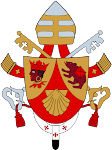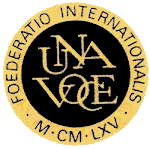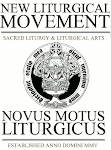
When I was a young man working in the City of London in the early 1950s, I would walk to Bank Underground Station at the end of the day's work. Often I would follow a detachment of Foot Guards marching to the Bank of England; the Bank Picket. They had been going to stand guard over the Nation's gold every night since June 1780 - and it was all because of anti-Catholicism!
In June 1780, the City was burning, a mob was rampaging through the streets, buildings were sacked, prisons burning, distilleries and breweries broken into by drunken rioters who stormed through the streets unchecked by those whose place it was to bring them to order. The Bank of England was stormed, Catholics were being attacked and raped and their home sand chapels burned; this was London for over a week that June.
It was then a City without a police force. There were the Bow Street Runners, thief-takers employed on a sort of semi-official, commission basis by the Bow Street Magistrate (at first the novelist Henry Fielding, but by this time his brother, Sir John, "the blind beak"). The only official guardians of the peace were parish constables often appointed against their will and serving with reluctance, and watchmen most of whom were old and feeble; nicknamed "Charlies" they were generally figures of fun. They were of little use and certainly not against rioters. When things got out of hand, order had to be maintained by the armed forces of the Crown. It was not until 1829 that the Metropolitan Police Force was formed.The Solicitor General introduced a Bill to establish a London police force in 1780,but there had been considerable opposition at all levels of society to the formation of such a force which was regarded as a form of foreign, especially French, tyranny and the Bill was lost.
Riots were not unusual in England, and especially in London, in the eighteenth century, or, indeed, earlier - medieval apprentices were forever at it. For the voteless underclass, it was the only Way to protest about their lot and make their voices heard. They had rioted against the Gin Act, an act to control the sale of spirits, to the extent that the act was made unworkable, and it was only some thirty years before there had been riots against the Calendar (New Style) Act of 1752which ordained that eleven days be deleted from the year 1752 to replace the Julian Calendar with the Gregorian one, they then being eleven days out of step; the mob thought eleven days had been stolen from their lives "give us back our eleven days" they demanded. There had also been a number of outbreaks against the presence of large numbers of Irish peasantry who were thought to be ready to work for lower wages than the pitiable amounts the English received. It may be that anti-Irish prejudice was a contributory cause of the "no-Popery" riots; a public house - not an obvious choice for destruction - was smashed up in Golden Lane; its keeper was named Murphy.
At the end of the eighteenth century the hatred of Catholics by ordinary Englishmen was mostly unreasoning and largely due to anti-Jacobite propaganda by the Whigs. Daniel Defoe, the author of Robinson Crusoe, said there were in London forty thousand stout fellows that would spend the last drop of their blood against Popery that do not know whether it be a man or a horse.
However, a more tolerant attitude was beginning to creep in. Among educated people fear of Papists was starting to disappear; the Jacobite threat was reduced after 1745 and the Grand Tour had made Continental Catholicism familiar to the wealthier classes, and the Pope less of bogeyman. The eighteenth century had become more tolerant towards Catholics; Lord North's Government had already recognised the status of the Catholic Church in Canada.
It could be said that the reason for the relaxation of penal laws against Catholics was the need of the Army to recruit more men. The need for soldiers was urgent and it was desirable to remove the restrictions which prevented Catholics from serving in the Army. In 1770, General Sir John Burgoyne, soon to be Commander in Chief of British Forces in America during the Rebellion there, proposed that Catholics be permitted to join the Army after taking a modified oath of allegiance. The Bill was rejected. However, by 1775 the American Rebellion had begin and there was the further possibility of war on the European continent; the combined French and Spanish fleets were in the Channel. Much needed recruits could be obtained from the largely Catholic Scottish Highlands and from Ireland if it were not for the problem of the anti-Papal content of the oath of allegiance.
The Government sent an emissary to Bishop Hay, Vicar Apostolic of the Lowland District in Scotland, concerning a proposed Act. The Bishop advised that Bishop Challoner, Vicar Apostolic of the London District, should be approached, but the Government was unwilling to consult with "Romish Bishops" who by the laws of the time should be in prison. The negotiations were, therefore, mostly handled by laymen, chief among them Lord Petre. As a result of these negotiations the first Catholic Relief Act for England received the Royal Assent on June 3rd 1778 making it no longer a felony to be a priest and allowing soldiers to enlist without taking an oath against the Pope, just one of loyalty to the Crown.
In 1779 when it was proposed to pass similar laws for Scotland there was rioting in Edinburgh and Glasgow. A Protestant Association was established to resist any attempt to relax the laws against Catholics.
In February of the same year, a meeting was held in Coach makers' Hall, Foster Lane in London at which a Protestant Association for England was formed. In November of that year, Lord George Gordon, a younger son of the Duke of Gordon and an anti-Papist fanatic who had been active in the campaign in Scotland was invited to become its President.
Some idea of the thinking of the more hostile anti-Catholic Londoner can be gained from what John Wesley, the father of Methodism, wrote on January 12th 1780, "I consider not whether the Romish religion be true or false: I build nothing on the one or the other supposition: therefore away with all your commonplace declamations against intolerance and persecution for religion: suppose every word of Pope Pius' creed were true, suppose the Council of Trent to have been infallible yet, I insist upon it, that no government, not Roman Catholic, ought to tolerate men of the Roman Catholic persuasion".
On Friday June 2nd 1780, a hot sunny day,a large number of Protestants assembled at St George‘s Fields in Southwark. About noon they moved off and marched to the House of Commons wearing blue cockades in their hats, carrying Lord George Gordon on their shoulders and crying "No Popery". They were to present a monster petition against the Relief Act to the House of Commons. When they arrived, Gordon, who was a Member of Parliament, entered the House while the mob remained outside.
At first they did little more than jostle MPs as they came from or went to the House,but gradually under the influence of agitators they became more violent. They beset Parliament and assaulted some of its members. They turned over' the coaches of peers whom they considered most favourably inclined towards the Relief Act. The Archbishop of York was made to shout "No Popery!" and to wear a blue cockade. Lord Mansfield, the Lord Chief Justice, had his coach smashed up about him as he rode in it.
For more than a week the mob roamed the streets of London clamouring for Protestant orthodoxy, had they known what that was. The Commons could not sit because of the mob. During all this, the authorities made no move to act against the rioters. The anger and violence of the mob was directed mainly against Catholics, but they also raided distilleries and breweries and robbed and looted as and where they pleased. One of the largest distilleries in London was owned by a Catholic, a Mr Langdale. The mob attacked it, got roaring drunk and set it on fire, with the result that many of them were burned to death. They' broke open the gaols, set fire to Newgate Prison and released about 300 of its prisoners. The King's Bench and Fleet Prisons and the new Bridewell were also burned.
The Bank of England was attacked, but was one of the few buildings to be defended by the authorities. John Wilkes,the Member of Parliament for Middlesex,who became Chamberlain of the City in 1774, acted with resolution against the mob, directing the Guards outside the Bank. When they ran short of ammunition, its defenders melted down ink pots to make bullets to resist the drunken crowd. The rioters were repulsed, but with heavy losses to the soldiers. As a result of this attack the picket of the Guards was nightly posted at the Bank until abolished by Harold Wilson's Government.
The "No Popery" rioters burned the Bavarian Embassy Chapel in Golden Square. They moved on to the Sardinian Embassy in Duke Street, Lincoln's Inn Fields and burned the chapel there. The Blessed Sacrament was removed from the chapel just in time and taken to the Ship Tavern in Little Turnstile. Bishop Challoner lived only about ten minutes walk away from the Embassy in which he often celebrated Mass. He was persuaded to take refuge in a neighbouring house which happily the mob failed to find. On Saturday morning, he was driven to Finchley, then a small village outside London, where he celebrated Mass the next day.
On Sunday afternoon a Catholic chapel in Ropemakers's Alley was destroyed along with a number of houses of Catholics, the chapel in Moorfields and the house of the resident priest in the same street were attacked along with the houses of other Catholics in Moorfields. The rioters stripped the priest's house of furniture and piled it up in the street together with the ornaments and vestments of the chapel, they tore out the altars, pulpit and pews and made a bonfire of them and burned most of the chapel archives, leaving nothing but bare walls. Owing to the ill treatment he suffered in the riots Mr Richard Dillon , the Missionary Rector of the Chapel, died the same year. Two more chapels were destroyed on Monday, in Wapping and East Smithfield
The Irish in Wapping formed themselves into a defence organisation for Catholic property and offered their services to the Home Secretary, but he declined the offer on the grounds it might lead to disturbance!
Because he was known to favour the Catholic Relief Act, a Protestant mob wrecked Lord Mansfield's house in Bloomsbury and destroyed his valuable library. Later, he was to preside over the trial of Lord George Gordon with conspicuous fairness. His house, Ken Wood, at Hampstead was saved from destruction by the presence of a squadron of Light Horse. Lord Petre's London house, however, was destroyed.
As the rioting continued unabated, King George III called a special meeting of the Privy Council at Buckingham House at which he observed that the soldiers could not act as no magistrate was prepared to read the Riot Act. The Riot Act had been passed in 1715 and was intended to prevent civil disorder. It made it a felony for an assembly of more than twelve people to refuse to disperse after being ordered to do so and having been read a specified portion of the Act by a magistrate. The Attorney General advised His Majesty that as the mob was engaged in a felony, the reading of the Riot Act was unnecessary. The King accepted that advice and issued a Proclamation calling out the military, ordering them to open fire and bring the rioters under control.
Although there were eventually as many as ten thousand soldiers on the streets, it is probable that it was less due to their efforts that the rioting ended, it is as likely that the mob had run out of steam and things just ran down. By Friday, order had almost been restored and what Lord Petre called "the most serious public disorder ever seen in this country" came to an end.
Twenty one people of the lower classes were hanged, bizarrely one of them was a fourteen year old boy who was executed for pulling down the house of the Bow Street Magistrate. Presumably he had some assistance.
About 450 people were killed or wounded in the riots.
By June 9th, everything was about over and Lord George Gordon was lodged in the Tower of London. He was acquitted at his trial. Later, he gave up the Protestant cause and became a convert to Judaism after being refused admittance to the Quakers. In 1788 he was imprisoned for a libel on the Queen of France, Marie Antoinette. No-one would stand surety for his good behaviour and he remained in prison until he died of gaol-fever five years later, in the same year the Queen he had libelled was guillotined, with her husband Louis XVI, by the French revolutionaries. Gordon was refused burial in the Jewish burial ground. The site of the Anglican church, St James', where he was interred instead now lies under Euston station.
After the riots, Catholics were compensated for the damage done to their property. They rebuilt their chapels, and the priest at Moorfields started a new register to replace what had been burned by the rioters and entered onto its flyleaf a note of all the baptisms and weddings he could remember having conducted before the destruction of the records.
When the Catholic Emancipation Act was passed in 1829 there was no Lord George Gordon to lead violent reaction to it and it passed peaceably into law.










